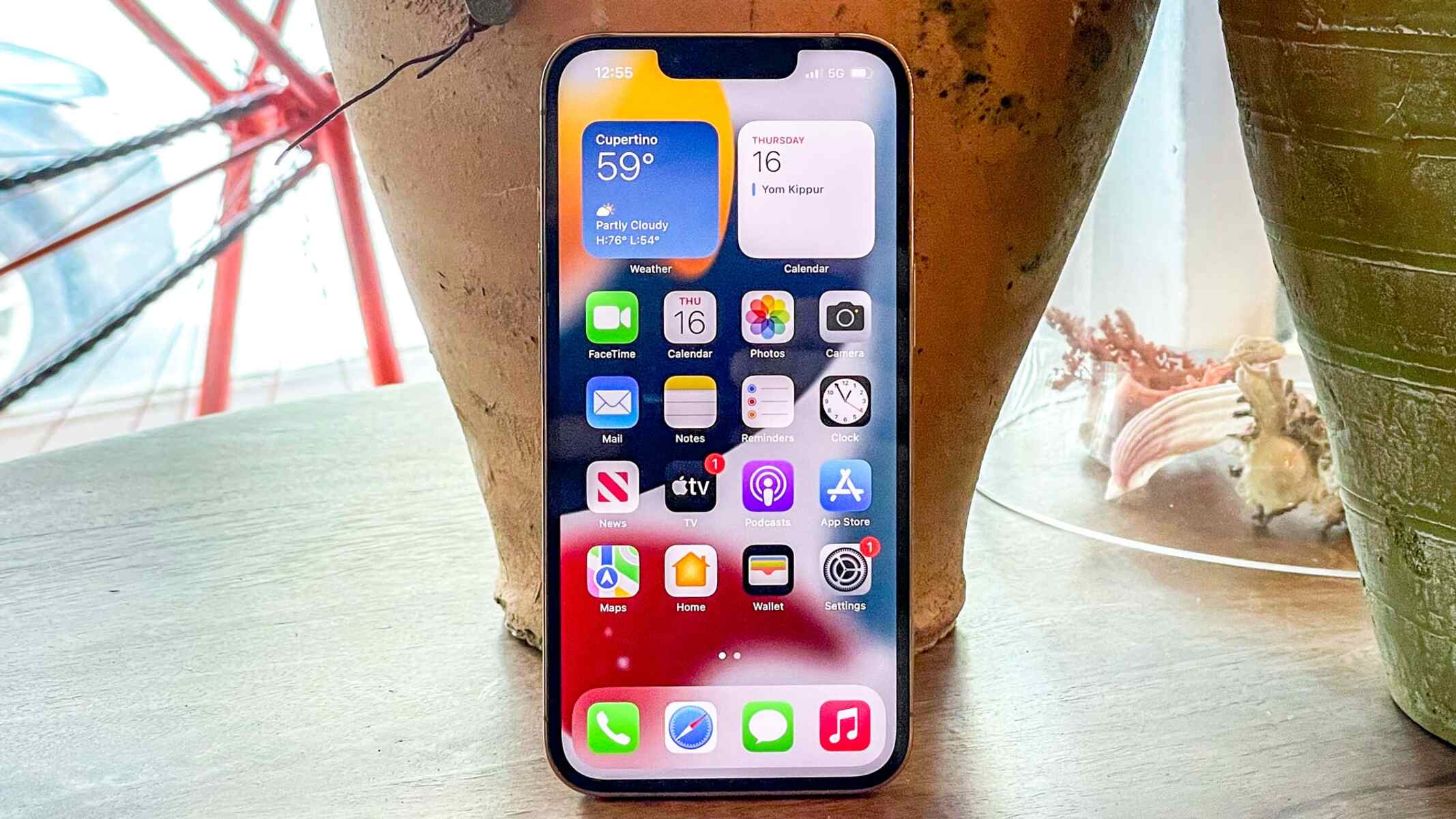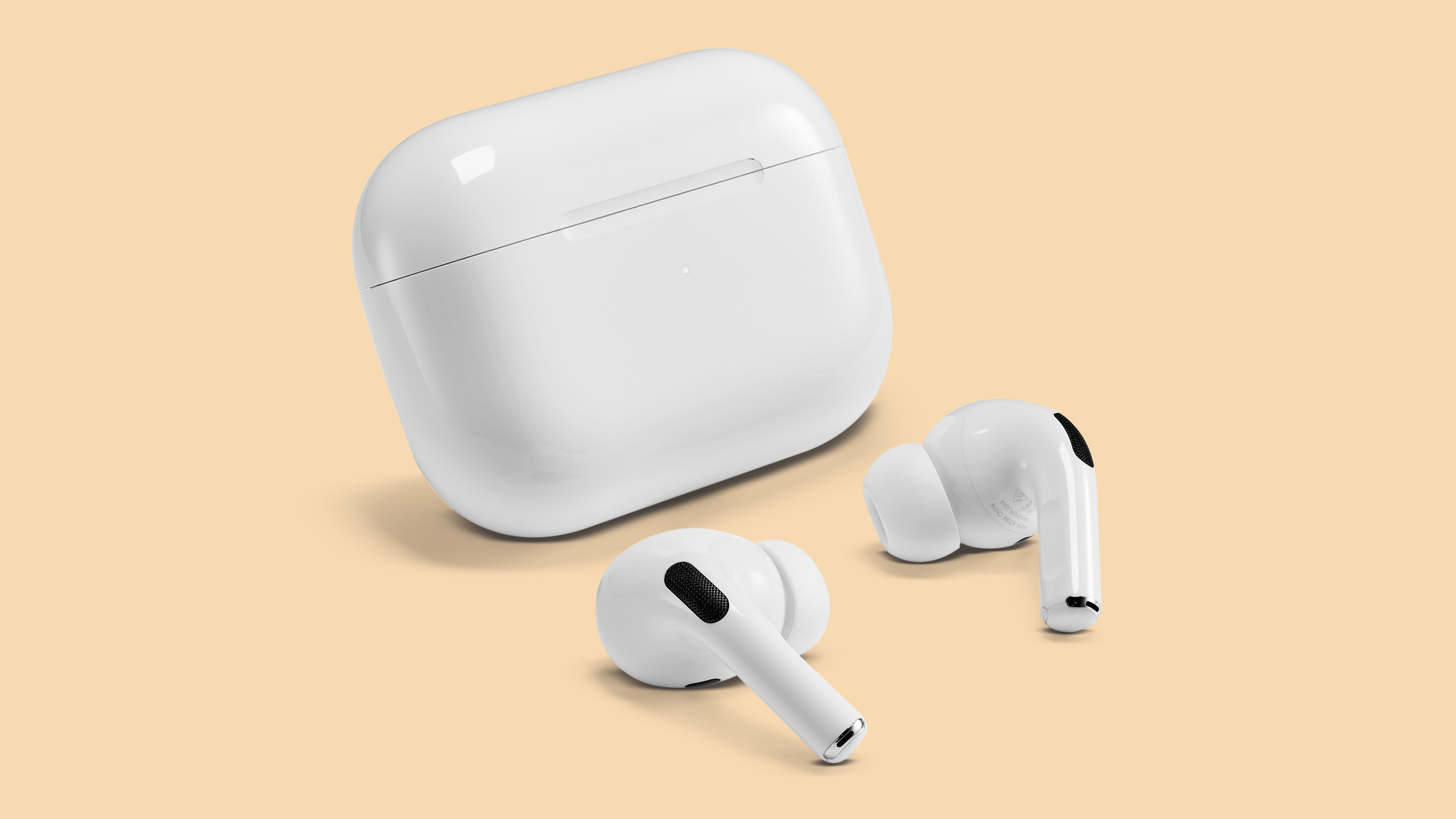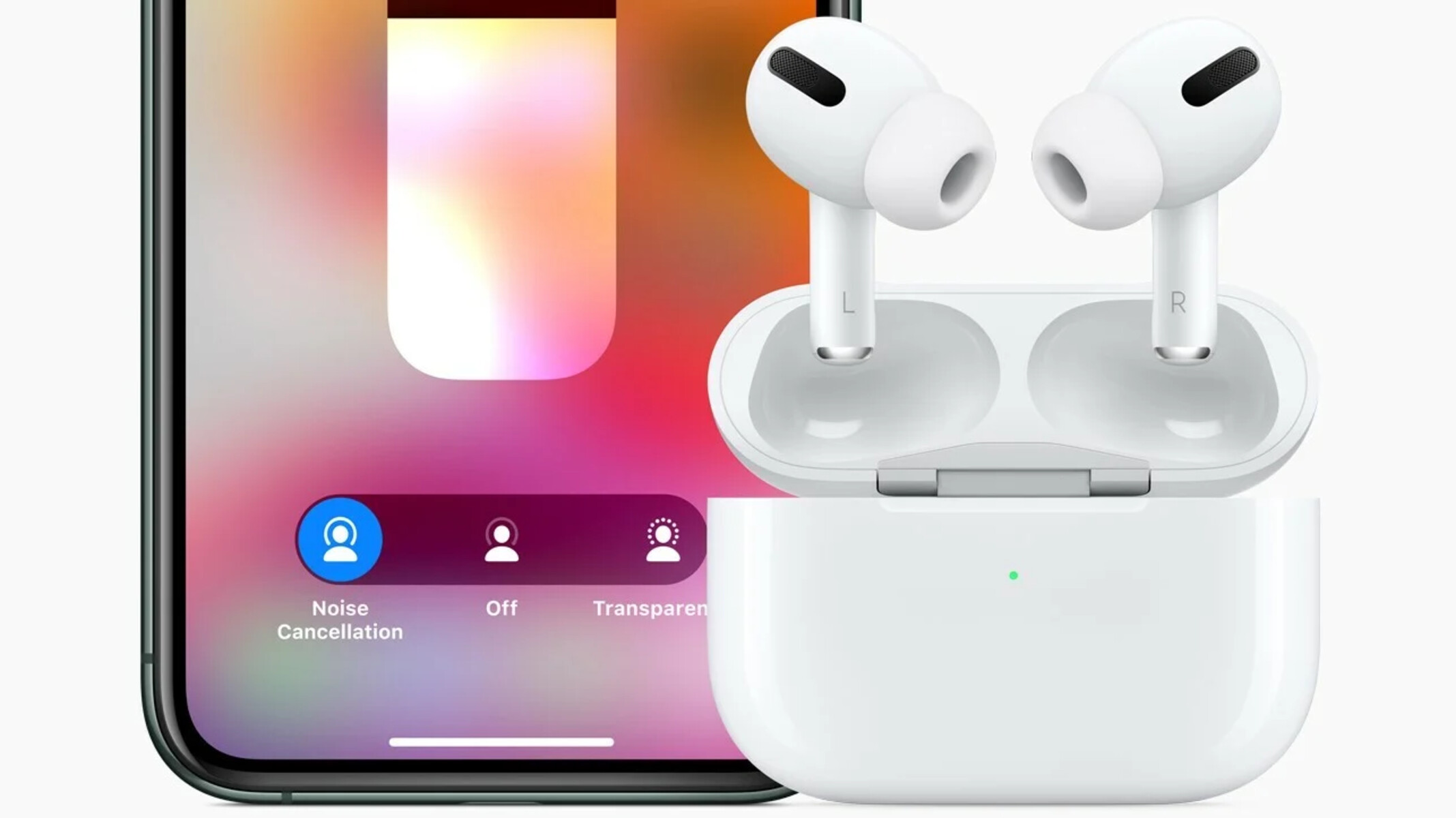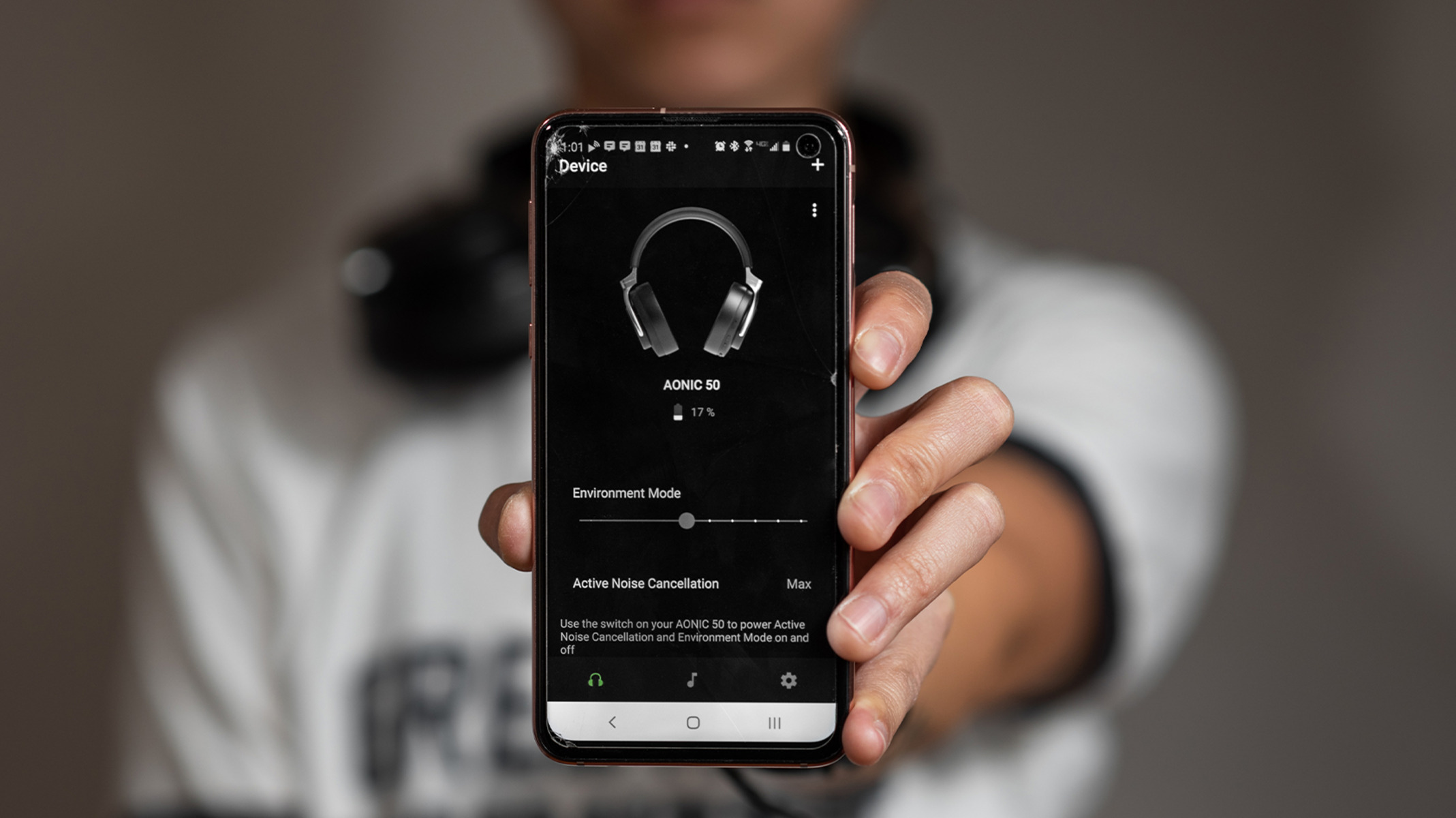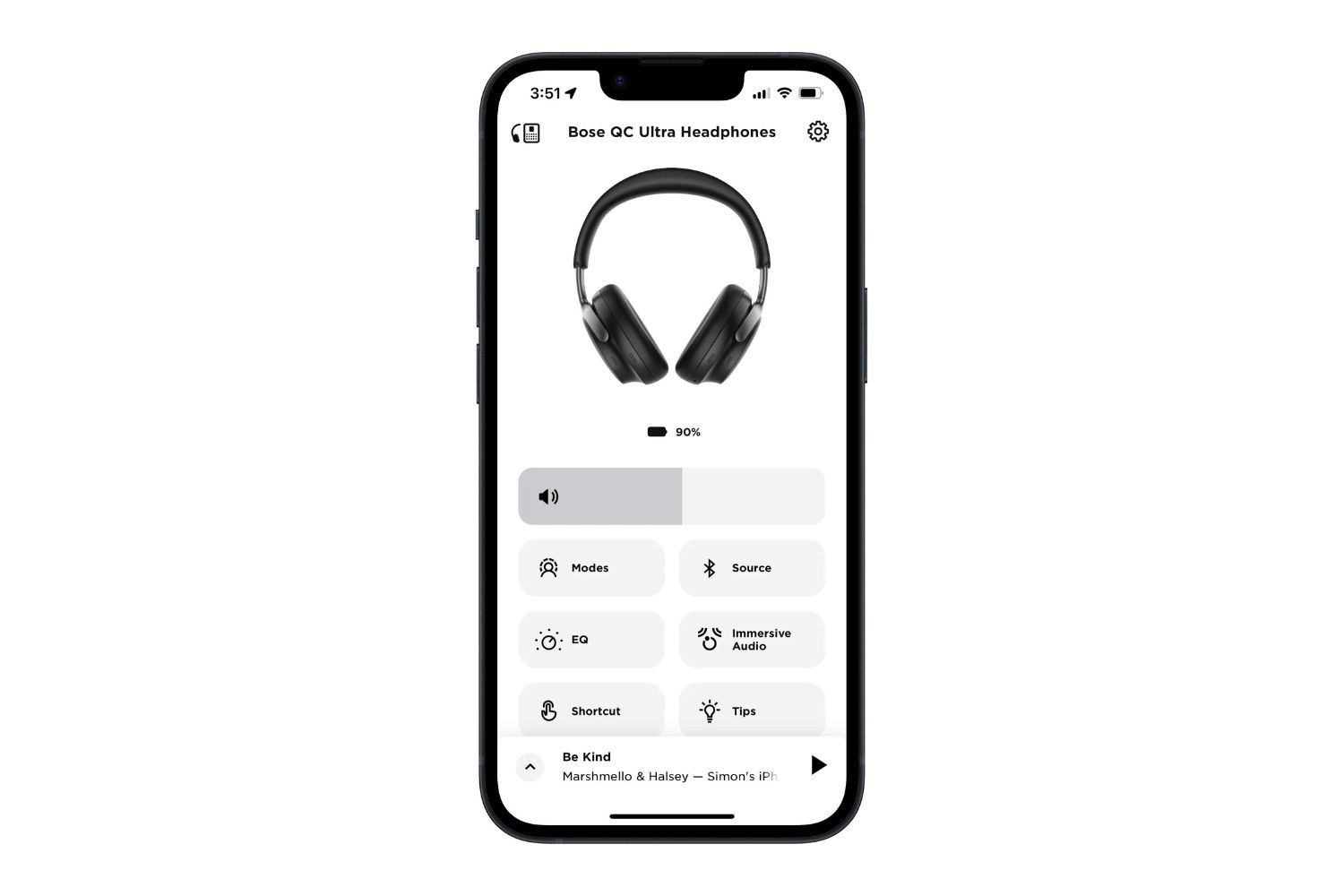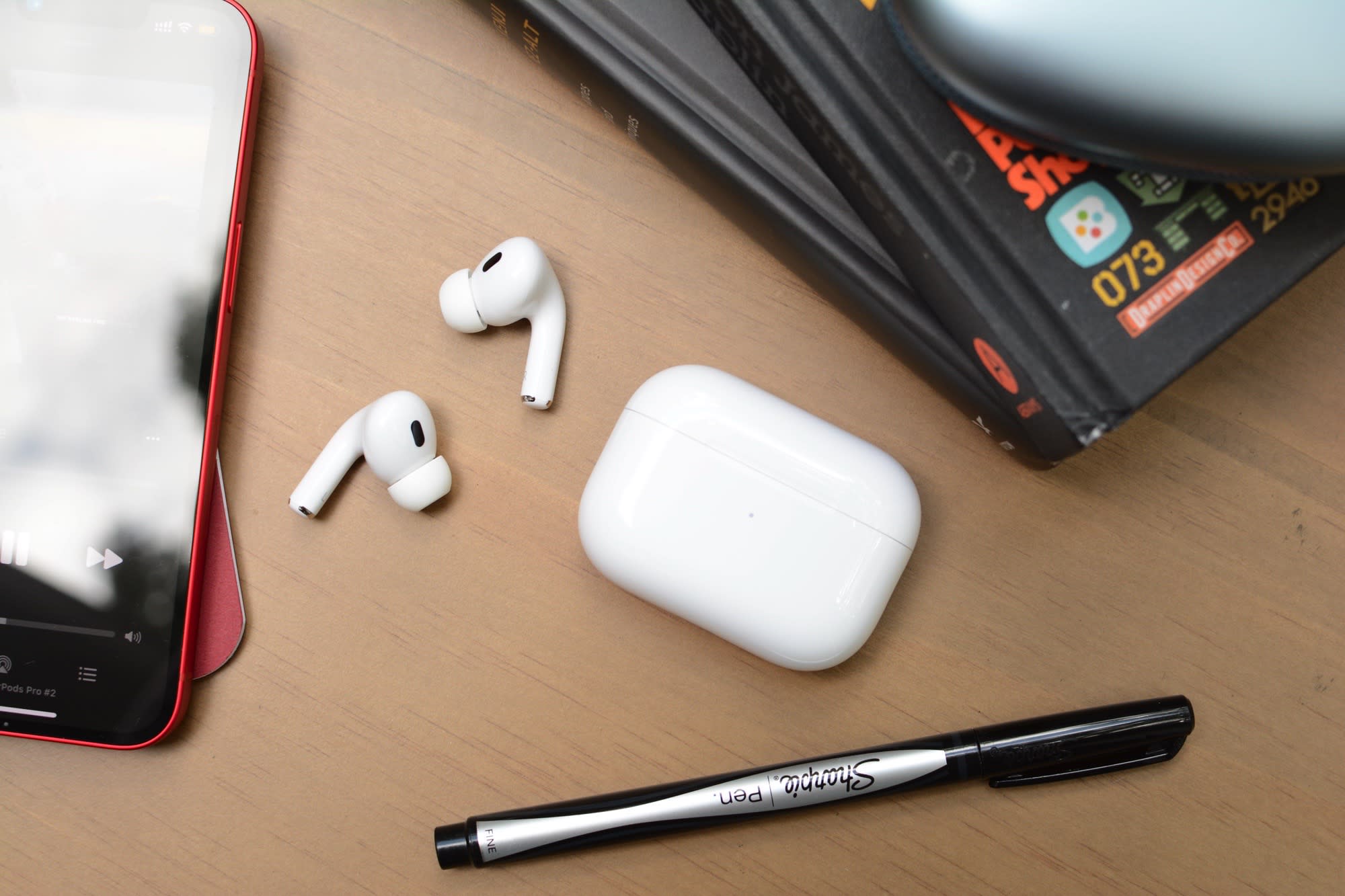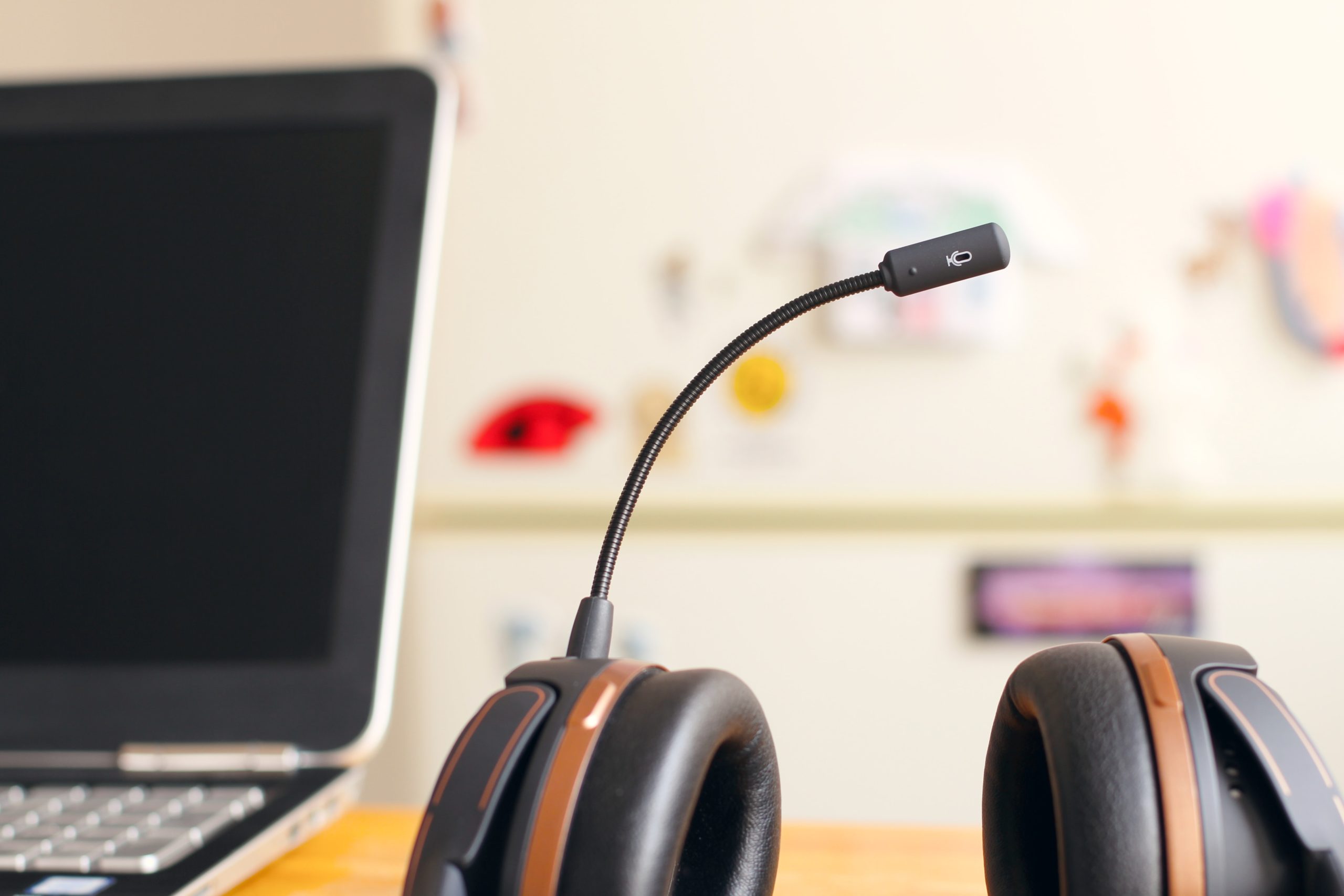Introduction
Noise cancellation technology has become increasingly popular in the realm of smartphones. With the constant hustle and bustle of modern life, the need for clear and undisturbed communication has never been greater. Luckily, phone noise cancellation has emerged as a solution to this problem.
Phone noise cancellation is a feature that helps reduce or eliminate background noise during phone calls and media playback. By employing advanced algorithms and signal processing techniques, this technology enables users to have crystal clear conversations and enjoy their media without any disruptive interference.
Whether you’re talking to a friend, participating in a conference call, or simply enjoying your favorite playlist, phone noise cancellation ensures you have a seamless and superior audio experience. It is designed to detect and suppress unwanted sounds, allowing you to focus on the conversation or media at hand.
In this article, we will delve into the inner workings of phone noise cancellation. We will explore how it operates, its benefits, the different types available, and its applications in various environments. Furthermore, we will discuss the factors to consider when choosing a phone with noise cancellation capabilities.
So, if you’re curious to know how this technology can enhance your audio experience, read on to discover everything you need to know about phone noise cancellation.
How Does Phone Noise Cancellation Work?
Phone noise cancellation works by a combination of hardware and software techniques to ensure that unwanted background sounds are reduced or eliminated. The process involves three primary steps: capturing the audio, analyzing the sound, and producing an opposing waveform.
When you make a call or play media on your phone, the device’s microphone captures the surrounding sounds, including both your voice and any background noise. This audio signal is then passed through a noise cancellation algorithm that analyzes the frequencies and characteristics of the sound.
Once the analysis is complete, the algorithm generates a waveform that is the opposite of the background noise detected. This opposing waveform is then played through the phone’s speaker simultaneously with the original audio signal. These two sound waves interact, effectively canceling out the unwanted noise.
The effectiveness of phone noise cancellation depends on the accuracy of the analysis performed by the algorithm. Advanced algorithms can distinguish between voice and noise and suppress specific frequencies that contribute to the interference. Additionally, some noise cancellation technologies can adapt and adjust in real-time to accommodate different environments and noise levels.
It’s important to note that there are different types of phone noise cancellation techniques utilized in smartphones. Some phones use passive noise cancellation, which relies on physical barriers, such as foam inserts or sealed earbuds, to block out external sounds. Others employ active noise cancellation, which utilizes microphones and algorithms to actively counteract background noise.
The latest advancements in digital signal processing have enabled the development of digital noise cancellation. This technique works by using digital filters to analyze audio signals and selectively cancel out unwanted noise. Hybrid noise cancellation combines multiple methods, such as active and passive noise cancellation, to provide an enhanced audio experience.
Phone noise cancellation is particularly useful in noisy environments where background sounds can interfere with your phone calls or media playback. Whether you’re in a crowded train, a bustling cafe, or a busy airport, this technology can help ensure that you can still hear and be heard clearly without distractions.
With such precise and sophisticated algorithms at work, phone noise cancellation has revolutionized the way we communicate and enjoy media on our smartphones. It has become an indispensable feature for those seeking optimal audio quality amidst the chaos of everyday life.
Benefits of Phone Noise Cancellation
Phone noise cancellation offers a range of benefits that enhance the user experience and improve audio quality. Here are some key advantages:
- Improved call clarity: One of the primary benefits of phone noise cancellation is the ability to have clear and intelligible phone conversations. By effectively reducing or eliminating background noise, this technology ensures that your voice is heard without interference, resulting in improved call quality and comprehension.
- Enhanced media enjoyment: Whether you’re listening to music, watching videos, or playing games on your smartphone, phone noise cancellation allows you to fully immerse yourself in the audio content. By minimizing external sounds, you can focus on the nuances and details of your media, enjoying a more immersive and enjoyable experience.
- Increased productivity: In a noisy work environment or during important conference calls, phone noise cancellation becomes a valuable tool for productivity. By eliminating distractions and background noise, you can concentrate on the task at hand, follow discussions more effectively, and contribute in a meaningful way.
- Improved voice recognition: Virtual assistants and voice recognition software are becoming increasingly prevalent in smartphones. Phone noise cancellation helps these technologies accurately detect and interpret your voice commands, even in noisy environments. This ensures a more seamless and efficient user experience.
- Reduced listening fatigue: Constant exposure to loud or distracting noises can lead to listening fatigue, causing discomfort and reducing concentration. By minimizing external sounds, phone noise cancellation helps prevent listening fatigue, allowing you to use your phone for extended periods without discomfort.
- Increased privacy: Phone noise cancellation also provides a level of privacy. With background noise effectively suppressed, it becomes more difficult for others to eavesdrop on your conversations, offering a sense of security and confidentiality when making calls in public spaces.
These benefits collectively contribute to an overall improved user experience and greater convenience when using your smartphone for communication, entertainment, and productivity.
As the technology continues to evolve, we can expect further enhancements in phone noise cancellation, making it an even more integral part of our mobile devices.
Types of Phone Noise Cancellation
Phone noise cancellation technology comes in different forms, each with its own unique approach to reducing unwanted background noise. Let’s explore some of the common types:
- Passive Noise Cancellation: This type of noise cancellation relies on physical barriers and insulation to block out external sounds. Some smartphones use foam inserts, earbuds, or over-ear headphones with a tight seal to passively block and absorb background noise. While passive noise cancellation is effective, it may not completely eliminate all external sounds.
- Active Noise Cancellation: Active noise cancellation goes a step further by using microphones and advanced algorithms to actively counteract background noise. The microphones pick up the ambient sounds, and the algorithms generate an opposing waveform that cancels out the unwanted noise. The processed sound is then played through the phone’s speaker, effectively reducing the interference.
- Digital Noise Cancellation: Digital noise cancellation utilizes digital signal processing techniques to analyze the audio signals and selectively cancel out unwanted noise. This method often involves the use of digital filters that can adjust in real-time to adapt to different noise environments. Digital noise cancellation provides greater flexibility and precision in reducing specific frequencies of noise.
- Hybrid Noise Cancellation: Hybrid noise cancellation combines both active and passive techniques to achieve optimal results. It leverages the physical barriers of passive noise cancellation along with the advanced algorithms of active noise cancellation to deliver superior sound quality. By using a hybrid approach, this type of noise cancellation provides a comprehensive solution for reducing background noise.
While passive and active noise cancellation are the most common types found in smartphones, digital and hybrid noise cancellation technologies are rapidly gaining popularity due to their ability to offer more customizable and adaptive noise reduction.
It’s important to note that the effectiveness of noise cancellation can vary between different devices and manufacturers. Therefore, it’s recommended to research and read reviews to find a phone that provides the type of noise cancellation that suits your needs.
Regardless of the specific type, phone noise cancellation technology continues to evolve, providing users with improved audio experiences and greater control over their ambient sound environment.
Passive Noise Cancellation
Passive noise cancellation is a type of noise reduction technique that relies on physical barriers and insulation to block out external sounds. It is commonly used in smartphones, headphones, and earbuds to provide a quieter and more immersive listening experience. While it may not completely eliminate all background noise, it can significantly reduce its impact.
In smartphones, passive noise cancellation is achieved through various means. Some devices feature foam inserts or ear tips that create a tight seal in the ear canal, effectively blocking external sounds from entering. This seal also helps to reduce sound leakage, ensuring that the audio remains confined to the listener’s ears.
Over-ear headphones are another popular form of passive noise cancellation. These headphones cover the entire ear, creating a physical barrier that blocks out external noise. The construction of the headphones, including the use of sound-isolating materials and cushioning, further enhances the noise reduction effect.
Passive noise cancellation is particularly effective at reducing low-frequency sounds, such as engine rumble, background chatter, or the hum of appliances. These sounds can often be intrusive and distract from the audio experience, whether it’s during phone calls or media playback.
While passive noise cancellation is generally effective, its effectiveness may vary depending on the fit and design of the device. The quality of the materials used, the shape of the ear tips or headphone cups, and the tightness of the seal can all impact the level of noise reduction achieved.
It’s important to note that passive noise cancellation does not rely on any electronic components or active algorithms. Instead, it focuses on creating a physical barrier to prevent external sounds from reaching the listener’s ears. This makes it a more affordable option compared to active noise cancellation.
While passive noise cancellation is effective for reducing background noise, it may not completely eliminate all sounds, especially high-pitched or sudden noises. For complete noise reduction, active or hybrid noise cancellation techniques may be necessary.
Despite its limitations, passive noise cancellation remains a popular choice for individuals seeking a simple and effective method to reduce unwanted noise. Whether you’re listening to music, watching videos, or making phone calls, passive noise cancellation can provide a more enjoyable and immersive audio experience.
Active Noise Cancellation
Active noise cancellation is an advanced technology that actively reduces unwanted background noise in real-time. It is widely used in smartphones, headphones, and other audio devices to provide a more immersive and uninterrupted listening experience. Unlike passive noise cancellation, which relies on physical barriers, active noise cancellation uses microphones and sophisticated algorithms to counteract external sounds.
The process of active noise cancellation involves capturing and analyzing the ambient noise using one or more built-in microphones. These microphones detect the surrounding sounds and send the audio signal to an algorithm that analyzes the frequencies and characteristics of the noise.
Once the analysis is complete, the algorithm generates an opposing waveform that is precisely synchronized with the detected noise. This opposing waveform, also known as an “anti-noise” signal, is then played through the device’s speaker simultaneously with the audio signal. As a result, the anti-noise signal actively cancels out the unwanted background noise, allowing the listener to hear the desired audio with greater clarity.
Active noise cancellation is particularly effective at reducing repetitive, constant sounds, such as the humming of engines, the droning of air conditioners, or the rumbling of trains. It can also reduce lower frequency sounds, such as road noise or ambient chatter, enhancing the overall audio experience.
One of the notable advantages of active noise cancellation is its ability to adapt to different environments. The algorithms used in modern smartphones and headphones continuously monitor the surrounding sounds and make adjustments to the anti-noise signal accordingly. This adaptability ensures that the cancellation remains effective even in changing noise conditions, providing a consistent listening experience.
It’s worth noting that active noise cancellation is most effective at reducing constant, predictable background noise. Sudden or unpredictable sounds, such as abrupt loud noises or sharp bursts of sound, may not be completely eliminated by active noise cancellation alone.
Active noise cancellation technology has significantly evolved over the years, becoming more sophisticated and efficient. Manufacturers continue to refine their algorithms and hardware to provide better noise reduction capabilities in their devices.
Active noise cancellation is widely used in high-end smartphones, premium headphones, and earbuds, making it an attractive feature for those seeking enhanced audio quality and immersive experiences. Whether you’re listening to music, watching movies, or making phone calls, active noise cancellation can help you focus on what you want to hear while minimizing distractions from the surrounding environment.
Digital Noise Cancellation
Digital noise cancellation is an advanced technique that utilizes digital signal processing (DSP) algorithms to selectively cancel out unwanted background noise. This technology is commonly found in smartphones, headphones, and other audio devices, providing users with a customizable and adaptable noise reduction solution.
Unlike passive and active noise cancellation, which rely on physical barriers or counteracting waveforms, digital noise cancellation analyzes audio signals and applies digital filters to target specific frequencies associated with background noise.
When using digital noise cancellation, the audio signal is processed in real-time by the device’s DSP chip. The chip analyzes the audio signal, identifying the frequencies and characteristics of unwanted noise. By applying digital filters, the algorithm selectively cancels out or attenuates these frequencies, effectively reducing the background noise while preserving the desired audio.
One of the significant advantages of digital noise cancellation is its ability to adjust and adapt to different noise environments. The algorithms continuously monitor the surrounding sound and adapt the digital filter settings accordingly. This adaptability ensures that the cancellation remains effective in various scenarios, such as crowded environments, public transportation, or even windy conditions.
Furthermore, digital noise cancellation allows for a more customizable experience. Some devices offer users the ability to adjust the intensity of noise cancellation or even choose presets based on specific environments. For example, users can switch between settings optimized for airplane travel, busy offices, or quiet libraries.
This level of customization enables users to tailor the noise cancellation experience to their preferences and needs. It also eliminates the need to rely solely on predetermined noise cancellation settings, providing greater control over the overall audio experience.
It’s important to note that while digital noise cancellation can be highly effective at reducing background noise, it may not completely eliminate all sounds, especially sudden and unpredictable noises. For additional noise reduction, manufacturers often combine digital noise cancellation with other techniques, such as active or passive noise cancellation, creating hybrid noise cancellation solutions.
As digital signal processing technology continues to advance, we can expect further improvements in digital noise cancellation. Manufacturers will likely refine their algorithms, expand the range of customizable options, and integrate this technology into a broader range of audio devices.
Overall, digital noise cancellation offers users a flexible and adaptable solution for reducing unwanted background noise, enhancing audio clarity, and providing a more immersive listening experience.
Hybrid Noise Cancellation
Hybrid noise cancellation is a combination of different noise reduction techniques, typically active and passive noise cancellation, to provide users with an enhanced audio experience. By integrating multiple methods, hybrid noise cancellation aims to synergistically reduce background noise and deliver superior sound quality.
In hybrid noise cancellation, the passive noise cancellation elements create a physical barrier to block out external sounds. This can involve the use of ear tips, foam inserts, or over-ear headphones that form a tight seal in the ears or cover them entirely. By physically isolating the ears from the surrounding noise, passive noise cancellation helps to minimize unwanted sounds from entering the audio pathway.
Active noise cancellation is then employed to actively counteract any remaining background noise. With the help of built-in microphones and advanced algorithms, the active component captures and analyzes the ambient sounds, generating an opposing waveform that cancels out the unwanted noise. This active cancellation process is synchronized with the audio signal, allowing the desired sound to come through clearly without interference.
The combination of passive and active noise cancellation in a hybrid system provides significant advantages. Passive noise cancellation establishes a strong foundation by blocking out a wide range of external noises, including low-frequency sounds and ambient chatter. Meanwhile, active noise cancellation tackles the remaining noise, particularly repetitive or constant sounds that are typically more difficult to eliminate through passive means.
Hybrid noise cancellation offers a balanced approach, leveraging the strengths of both techniques to provide a comprehensive solution for reducing background noise. By effectively combining physical barriers with active noise cancellation, users can achieve a higher level of noise reduction and clearer audio quality, even in noisy environments.
One of the advantages of hybrid noise cancellation is its adaptability to various situations. The active component of the hybrid system can continuously adjust the cancellation parameters based on the changing noise conditions. This real-time adaptation allows for optimal noise reduction, regardless of the surrounding environment.
Moreover, hybrid noise cancellation can cater to individual preferences and audio needs. Some devices offer users the ability to fine-tune the balance between passive and active noise cancellation, allowing for a personalized listening experience. This flexibility allows users to achieve their desired level of noise reduction while maintaining excellent audio quality.
As technology advances, we can expect further developments in hybrid noise cancellation. Manufacturers may explore new combinations of noise reduction techniques or integrate additional methods, such as digital noise cancellation, to further enhance the capabilities of hybrid systems.
Overall, hybrid noise cancellation provides users with a versatile and effective solution for reducing background noise and enjoying clear, immersive audio experiences. Whether it’s for phone calls, music playback, or on-the-go entertainment, hybrid noise cancellation can significantly enhance the audio quality and overall user experience.
Phone Noise Cancellation in Different Environments
Phone noise cancellation technology is designed to adapt to various environments, ensuring optimal performance and reducing unwanted background noise in a wide range of situations. Let’s explore how phone noise cancellation performs in different environments:
Noisy Transportation: Whether you’re traveling by plane, train, or bus, these environments can be notoriously noisy. Phone noise cancellation helps to mitigate the ambient noise, allowing you to have clear phone conversations or enjoy your media without interference. It effectively cancels out the engine noise, rumbling, and chatter, making your audio experience more enjoyable and less fatiguing.
Busy Public Spaces: Coffee shops, shopping malls, and crowded streets are often filled with background noise that can make phone calls or media playback challenging. Phone noise cancellation helps to reduce the distractions caused by surrounding conversations, footsteps, and other ambient noises. By filtering out the unwanted sounds, it ensures that your voice is heard clearly during calls and that you can fully immerse yourself in your media.
Workplaces and Offices: Open office environments or noisy workplaces can disrupt phone calls and impact productivity. Phone noise cancellation helps to minimize the distractions caused by coworkers’ conversations, keyboard typing, or office equipment noise. This technology enables you to have focused and productive conversations, even in bustling office settings.
Outdoor Environments: Windy or outdoor environments can introduce additional challenges when it comes to phone calls or media playback. The wind can cause unpleasant noises and interference, making it difficult to hear and be heard. Phone noise cancellation technology works to reduce the wind noise and improve the clarity of your phone conversations, ensuring that your voice carries through clearly.
Quiet Spaces: Phone noise cancellation is not just useful in noisy environments but can also enhance your audio experience in quiet spaces. By reducing subtle ambient sounds, such as background hums, air conditioning noise, or electrical interference, it allows you to enjoy your media with greater clarity and precision, even in a serene setting.
It’s important to note that while phone noise cancellation technology is highly effective, it may not eliminate all external sounds completely. Sudden, impulsive noises or sharp bursts of sound may still be audible to some extent. However, phone noise cancellation significantly reduces the impact of these sounds, ensuring a more enjoyable and uninterrupted audio experience.
Manufacturers continue to enhance their phone noise cancellation algorithms and hardware to provide better noise reduction in various environments. As technology evolves, we can expect further advancements in noise cancellation capabilities, resulting in an even more seamless and immersive audio experience across different settings.
Phone Noise Cancellation in Calls and Media Playback
Phone noise cancellation plays a crucial role in improving the quality of phone calls and media playback, allowing users to have clear, uninterrupted conversations and enjoy their audio content without distractions. Let’s explore how this technology enhances both phone calls and media playback:
Calls: Phone noise cancellation ensures that your voice is transmitted clearly during phone calls, even in noisy environments. By reducing background noise, such as traffic, chatter, or wind, it helps the person you’re speaking with to hear your voice without interference. This is especially important in important conversations, business calls, or when communicating in crowded places where background noise can be overwhelming. Phone noise cancellation technology ensures that your voice remains the focus of the conversation, enhancing call clarity and improving communication overall.
Media Playback: Whether you’re listening to music, podcasts, or watching videos, phone noise cancellation enhances the audio quality and immersive experience. By reducing ambient noise and distractions, it allows you to fully immerse yourself in the audio content. You can enjoy the subtle nuances of music, dialogues in movies, or the details of podcasts without interruption from external sounds. Phone noise cancellation ensures that the audio reaches your ears in its purest form, providing a more enjoyable and immersive media playback experience.
Phone noise cancellation technology works seamlessly in both wired and wireless scenarios. Whether you’re using wired headphones with a noise cancellation feature or wireless earbuds with built-in noise cancellation capabilities, the technology operates in a similar manner to ensure optimal audio quality.
It’s important to understand that the effectiveness of phone noise cancellation may vary depending on the device, the quality of the microphones and speakers used, and the algorithms employed. Different manufacturers may have their own proprietary noise cancellation technologies, each with its unique set of features and performance levels. Therefore, it’s recommended to research and choose a device known for its strong noise cancellation capabilities to enjoy the best audio experience.
Additionally, some devices offer the option to adjust the level of noise cancellation or employ different presets for different scenarios. This customization allows users to tailor the intensity of noise cancellation based on their personal preferences or the specific noise environment they find themselves in.
As technology continues to advance, phone noise cancellation is expected to improve even further, offering even more refined and effective noise reduction in both calls and media playback. The continued development of advanced algorithms, better microphones, and enhanced signal processing techniques will contribute to an optimal audio experience for users.
In summary, phone noise cancellation greatly enhances the clarity of phone calls and the immersion of media playback. By eliminating background noise, it ensures that your voice is heard, and your audio content is enjoyed with maximum clarity and without distractions.
Factors to Consider when Choosing a Phone with Noise Cancellation
When selecting a phone with noise cancellation capabilities, there are several important factors to consider to ensure you choose a device that suits your needs and provides a superior audio experience. Here are some key considerations to keep in mind:
Noise Cancellation Technology: Determine the type of noise cancellation technology used in the phone. Is it passive, active, or a hybrid system? Each type has its own benefits and drawbacks, so choose the one that aligns with your preferences and the environments in which you’ll use the phone most frequently.
Audio Quality: Pay attention to the overall audio quality of the phone, not just the noise cancellation feature. Excellent noise cancellation won’t be effective if the audio output is subpar. Look for a phone with high-quality speakers and a robust audio system to ensure a satisfying audio experience.
Battery Life: Noise cancellation technology can consume significant battery power. Consider the battery life of the phone, especially when the noise cancellation feature is active. Look for devices that offer extensive battery life or have efficient power management systems to ensure that the noise cancellation feature can be used for extended periods without draining the battery quickly.
User Customization and Controls: Some phones offer users the ability to customize the level of noise cancellation or adjust settings based on specific environments. Consider whether the phone allows you to personalize the noise cancellation settings according to your preferences and the noise conditions you encounter frequently.
Comfort and Fit: If you’re opting for headphones or earbuds with noise cancellation, ensure they are comfortable to wear for extended periods. Pay attention to ergonomic design, cushioning, and the availability of different ear tip sizes to ensure a secure and comfortable fit.
Compatibility: Check for compatibility with different audio devices and platforms. Ensure that the phone supports the necessary connections (e.g., Bluetooth, USB-C, etc.) and is compatible with your preferred audio sources, such as music players, streaming services, or communication platforms.
Brand and Reviews: Consider the reputation and reviews of the phone and its noise cancellation performance. Research the brand’s track record in producing quality audio devices and read user reviews to gauge the effectiveness of the noise cancellation feature in real-world scenarios.
Budget: Set a budget and consider devices within your price range. Noise cancellation technology can vary in price, so it’s essential to find a balance between your desired features and affordability.
By considering these factors, you can make an informed decision when choosing a phone with noise cancellation capabilities. Remember to prioritize the features that matter most to you and align with your specific audio needs and preferences. Ultimately, selecting the right phone with noise cancellation will ensure an enhanced audio experience and provide greater enjoyment during phone calls, media playback, and other audio-related activities.
Conclusion
Phone noise cancellation has become a significant feature in smartphones, providing users with the ability to have clear phone conversations and enjoy media playback without disruptive background noise. Whether it’s active, passive, digital, or hybrid noise cancellation, this technology has revolutionized the way we interact with our devices and the audio quality we experience.
By employing advanced algorithms, microphones, and signal processing techniques, noise cancellation technology helps to reduce or eliminate unwanted noise, ensuring clearer phone calls, improved voice recognition, increased productivity, and enhanced media enjoyment. It adapts to different environments, from noisy transportation to busy public spaces, ensuring that you can communicate and indulge in your audio content with minimal distractions.
When selecting a phone with noise cancellation capabilities, consider factors such as the noise cancellation technology employed, overall audio quality, battery life, user customization options, comfort and fit, compatibility, brand reputation, and budget. Taking these factors into account will help you choose a device that meets your specific needs and preferences.
As technology continues to advance, we can expect even more refined noise cancellation capabilities in future smartphones. Manufacturers will likely refine their algorithms, introduce new techniques, and improve the overall audio experience. Phone noise cancellation is an ever-evolving technology that promises to continue enhancing communication and audio enjoyment for users.
So, whether you’re navigating a crowded subway, working from a noisy coffee shop, or simply wanting to immerse yourself in your favorite playlist, a phone with noise cancellation will provide you with an audio experience that cuts through the noise and allows you to focus on what truly matters – clear communication and immersive media playback.







